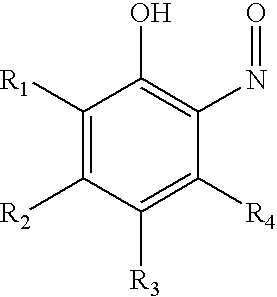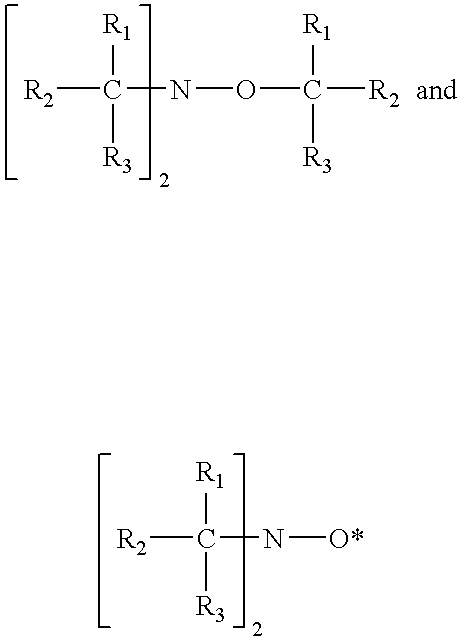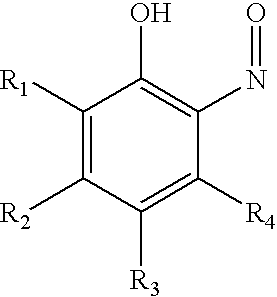Ortho-nitrosophenols as polymerization inhibitors
a technology of orthonitrosophenols and inhibitors, which is applied in the direction of hydrocarbon purification/separation, hydrocarbons, group 4/14 element organic compounds, etc., can solve the problems of unsatisfactory polymerization, loss of monomer, and low yield, and achieve the effect of effective inhibition amount and prevention of premature polymerization
- Summary
- Abstract
- Description
- Claims
- Application Information
AI Technical Summary
Benefits of technology
Problems solved by technology
Method used
Image
Examples
examples
Preparation of Inhibitor Solution
[0096] T-Butylcatechol (TBC) is removed from commercially available styrene by distillation from CaH2. The desired amount of inhibitor(s) is added to the TBC-free styrene directly, together with inert polystyrene standard (Mn from 2,000,000,500 ppm wt %), as internal standard.
Procedure for GPC Schlenk Test under Nitrogen
[0097] To a 100 mL Schlenk flask with magnetic stirbar and septum, was added 20 mL of styrene solution with the desired amount of inhibitors. The flask was connected to a double manifold and degassed by three freeze-pump-thaw cycles to remove all oxygen and allow warming to room temperature before being placed in a pre-heated oil bath (116° C.) to heat under N2. At various time intervals, 0.2 mL of solution was taken via a gas-tight syringe for Gel Permeation Chromatography (GPC) analysis. The reaction was typically stopped when the solution became too viscous to take samples via syringe and the last sample was taken directly fro...
PUM
| Property | Measurement | Unit |
|---|---|---|
| Fraction | aaaaa | aaaaa |
| Fraction | aaaaa | aaaaa |
| Fraction | aaaaa | aaaaa |
Abstract
Description
Claims
Application Information
 Login to View More
Login to View More - R&D
- Intellectual Property
- Life Sciences
- Materials
- Tech Scout
- Unparalleled Data Quality
- Higher Quality Content
- 60% Fewer Hallucinations
Browse by: Latest US Patents, China's latest patents, Technical Efficacy Thesaurus, Application Domain, Technology Topic, Popular Technical Reports.
© 2025 PatSnap. All rights reserved.Legal|Privacy policy|Modern Slavery Act Transparency Statement|Sitemap|About US| Contact US: help@patsnap.com



